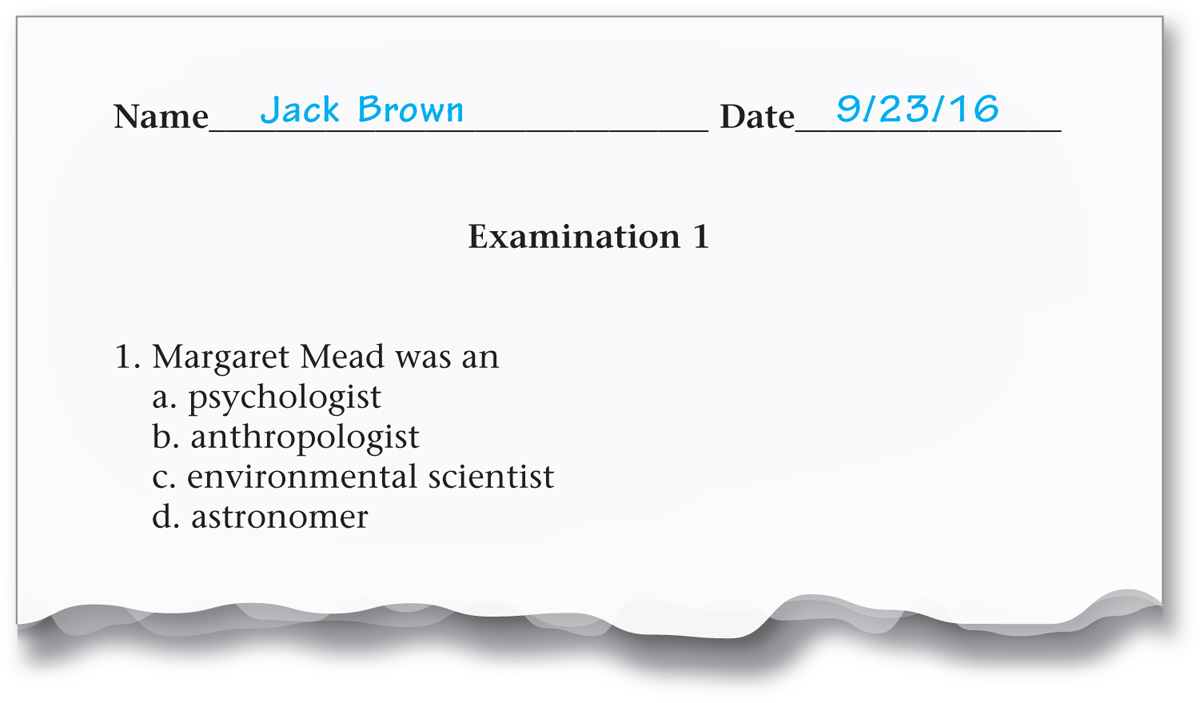Multiple-Choice Questions
Multiple-choice questions provide a number of possible answers, often between three and five. The answer choices are usually numbered (1, 2, 3, 4, …) or lettered (a, b, c, d, …), and the test taker is supposed to select the correct or the best one. Preparing for multiple-choice tests requires you to actively review all of the material that has been covered for a specific period, such as a week or a month. Reviewing flash cards, summary sheets, mind maps, or the recall column in your lecture notes is a good way to review large amounts of material efficiently.
Look for particular cues and quirks that multiple-choice questions include. Take extra care when choosing the answer to questions that contain words such as not, except, all, and but. Also read each answer choice carefully; be suspicious of choices that use words such as always, never, and only. These choices are often (but not always) incorrect. Often the correct answer is the option that is the most comprehensive.
In some multiple-choice questions, the first part of the question is an incomplete sentence called the stem, and the answer choices complete the sentence. In these questions, any answer choices that do not fit the grammar of the stem correctly are usually wrong. For example, in Figure 9.3, “Margaret Mead was an” is the stem. Which of the four answer options does not grammatically fit the stem, and can therefore be ruled out?

FIGURE 9.3  Example of a Multiple-Choice Question
Example of a Multiple-Choice Question
To avoid becoming confused by answer choices that sound alike, predict your own answer to the question before reading the options. Then choose the answer that best matches your prediction.
If you are totally confused by a question, place a check mark in the margin and come back to it later. Sometimes a question later in the exam may provide a clue to the answer of the question you are unsure about. If you have absolutely no idea, look for an answer that at least has some pieces of information. If there is no penalty for guessing, fill in an answer for every question, even if it is just a guess. If there is a penalty for guessing, don’t just choose an answer at random; leaving the answer blank might be a wiser choice. Finally, always go back, if you have time at the end, and double-check that you chose the right answer for the right question, especially if you are using a Scantron form.
high-impact practice 3
Work Together
Is One Type of Exam Better than Another?
Many college instructors do not give essay exams in first-year courses, and instead use multiple-choice questions. With a small group of other students, discuss the kind of learning that multiple-choice exams measure, and the kind of learning they miss. Which type of exam do students in the group prefer? Share your reactions and ideas with the whole class.